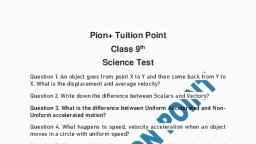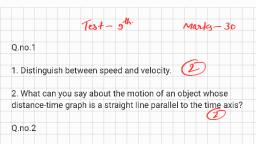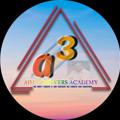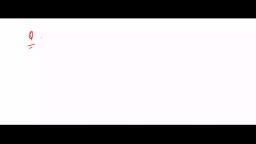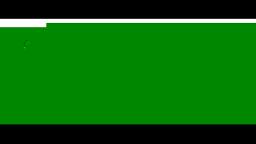Question 1 :
A ball starts rolling on a horizontal surface with an initial velocity of 1 m/s. Due to friction, itsvelocity decreases at the rate of $${0.1 m/s^2}$$ , Howmuch time will it take for the ball to stop?
Question 2 :
A body is falling freely under gravity. At time t=0 s, velocity = 0 m/s. The distances covered by it in the first, second and third seconds of its motion are in the ratio of<br/>
Question 3 :
Assertion: A body with constant acceleration always moves along a straight line.
Reason: A body with constant acceleration may not speed up.
Question 4 :
In Uniform circular motion direction of velocity is along the _______ drawn to the position of particle on the circumference of the circle.<br>
Question 5 :
Assertion: Acceleration and displacement are in the opposite direction during retardation.
Reason: Acceleration is given as the change in velocity per unit time.
Question 6 :
The average resisting force that must act on a $$5kg$$ mass to reduce its speed from $$65{cms}^{-1}$$ to $$15{cms}^{-1}$$ in $$0.2s$$ is
Question 7 :
A car attains a velocity of 10 m s$$^{-1}$$ in 5 s. If initially, it had been at rest, its acceleration must be ___________ .<br/>
Question 8 :
A body travels 200 cm in the first two seconds and 220 cm in the next 4 seconds with same acceleration. The velocity of the body at the end of the 7th second is:<br/>
Question 9 :
A wooden block sliding down from the top of a smooth inclined plane starting from rest takes $$t_{1}$$ seconds to reach the bottom of the plane and attains velocity $$v_{1}$$. Another block of twice the mass falling freely in air from the same height takes $$t_{2}$$ seconds to reach the bottom of the plane and attains velocity $$v_{2}$$. If the angle of inclination of the plane is $$30^{{0}}$$,  then
Question 10 :
A parachutist after bailing out falls $$50\ m$$ without friction. When parachute opens, it decelerates at $$2\ m{ s }^{ -2 }$$. He reaches the ground with speed $$3\ m{ s }^{ -1 }$$. At what height did he bail out? ($$g=9.81m/{ s }^{ 2 }$$)
Question 11 :
In a uniform circular motion (horizontal) of a ball tied with a string, velocity at any time is at an angle, $$\theta$$, with acceleration. Then $$\theta$$ is:<br/>
Question 13 :
From a $$10 m$$ high building a stone $$'A '$$ is dropped $$\&$$ simultaneously another stone $$'B '$$ is thrown horizontally with an initial speed of $$5 { m }/{ s }$$. Which one of the following statement is true?
Question 14 :
A stone is thrown vertically upwards. When the particle is at one-half its maximum height, its speed is $$10  { m }/{ s }$$, then maximum height attained by particle is $$\left( g=10  { m }/{ { s }^{ 2 } } \right)$$:
Question 15 :
Write true or false for the following statements :<br>The acceleration of a body thrown up is numerically the same as the acceleration of a downward falling body but opposite in sign .
Question 16 :
A plane has a takeoff speed of $$88.3 m/s$$ and requires $$1365 m$$ to reach that speed. Determine the acceleration of the plane.
Question 17 :
The two ends of a train moving with constant acceleration pass a certain point with velocities $$u$$ and $$v$$. The velocity with which the middle point of the train passes the same point is
Question 18 :
According to this equation:<br>$$\triangle x = \dfrac {1}{2}at^{2}$$<br>We can determine how far an object, starting from rest, has traveled in the x direction if we know its constant acceleration and how long it has traveled.<br>Object M and object N both start from rest and have constant accelerations.<br>If object M has travelled for twice as much time as object N and object M's acceleration is three times that of object N, then how many times further has object M traveled than object N?
Question 19 :
A ball is dropped from a height of $$19.6m$$. The distance covered by it in the last second is <br>
Question 20 :
A stone of mass $$200\ g$$ thrown up with a certainvelocity reaches a maximum height of $$30 $$ m.Another body of double the mass is thrown upwith half the velocity of the first. Maximum height reached by it is
Question 21 :
The declaration experienced by a moving motor boat, after its engine is cut-off is given by $$\frac { \mathrm { d } \mathrm { v } } { \mathrm { dt } } = - \mathrm { k } \mathrm { v } ^ { 3 }$$where k is constant If $$\mathbf { v } _ { 0 }$$is the magnitude of the velocity at cut-off, the magnitude of the velocity at a time t after the cut off is
Question 22 :
A ball is dropped from the top of a building $$100 \ m$$ high. At the same instant another ball is thrown upwardswith a velocity of$$40\ ms^{-1}$$from the bottom of the building. The two balls will meet after.
Question 23 :
The time taken to return to the ground from the maximum height:
Question 24 :
A bullet when fired into a target loses half of its velocity after penetrating 20 cm. Further distance of penetration before it comes to rest is :<br/>
Question 25 :
A car accelerates from rest at a constant rate $$\alpha$$ for some time after which it decelerates at a constant rate $$\beta$$ to come to rest. If the total time elapsed is $$t$$, the maximum velocity acquired by the car is given by<br>
Question 26 :
If the distance traveled by a body in the nth second is given by (4 + 6 n) m then find the initial velocity and acceleration of the body.<br/>
Question 27 :
From a $$200  m$$ high tower, one ball is thrown upwards with speed of $$10  { m }/{ s }$$ and another is thrown vertically downwards at the same speed simultaneously. The time difference of their reaching the ground will be nearest to
Question 28 :
Rahul is travelling in a bus on straight road facing in the direction of motion of bus. If the bus starts accelerating in same direction then Rahul will fall
Question 29 :
A car was travelling at a speed of 10 m/s. After thebrakes were applied, it start to decelerate at a rate of 2 $$m/s^2$$ and finally came to rest. Find the distance traveled by the car before coming to rest.
Question 30 :
The length of a seconds hand in watch is $$1$$ $$cm$$. The change in velocity of its tip in $$15\ s$$ is<br>
Question 31 :
If a train travelling at $$72$$  km/h is to be brought to rest at a distance of $$200$$ m then its retardation should be :
Question 32 :
A ball dropped from a point $$P$$ crosses a point $$Q$$ in $$t$$ second. if $$R$$ andS are points such that, $$PQ=QR=RS$$,the time taken by the ball totravel from $$R$$ to $$S$$ is:
Question 33 :
A bullet initially moving with a velocity $$20\ ms^{-1}$$ strikes a target and comes to rest after penetrating a distance 10 m in the target.Calculate the retardation caused by the target.<br>
Question 34 :
Rex Things throws his mother's crystal vase vertically upwards with an initial velocity of $$26.2 m/s$$. Determine the height to which the vase will rise above its initial height.
Question 35 :
A body is released from a height and it falls freely towards the earth. Exactly 1 s later another body is released. What is the distance between the two bodies 2 s after the release of the second body?<br/>
Question 36 :
A car starts from rest and moves along the x-axis with a constant acceleration $$5\ ms^{-2}$$ for $$8\ s$$. If it then continues with constant velocity, what distance will the car cover in 12 seconds since it started from rest?<br/>
Question 39 :
A body moving with uniform acceleration in a straight line is at points A, B, C, D after successive equal intervals of time. The distance AD is equal to:
Question 40 :
When brakes are applied to a bus, the retardation produced is  $$25 cm{s}^{-2}$$ and the bus takes $$20s$$ to stop. Calculate the initial velocity of the bus.
Question 41 :
When a ball is thrown up vertically with a velocity $${ v }_{ 0 }$$ it reaches a height $$h$$. If one wishes to triple the maximum height then the ball be thrown with a velocity<br>
Question 42 :
A car accelerates from rest at a constant rate $$ \alpha $$ for sometime, after which it decelerates at a constant rate $$ \beta $$ to come to rest. If $$T$$ is the total time, then maximum speed of the car during this time is 
Question 43 :
A driver has to apply sudden brakes to stop his vehicles moving at $$72  {km}/{hr}$$ and stops within $$2  seconds$$. The retardation produced is then<br/>
Question 44 :
An automobile travelling with the speed of $$\displaystyle 72 km {h}^{-1} $$ , can be stopped within a distance of $$20 m$$, by applying brakes. Determine the retardation.
Question 45 :
A particle moves along a circle of radius $$2\ m$$ with a constant speed of $$8\ m/s$$. It covers the quarter of circle in sec?
Question 46 :
A $$2 kg$$ object has an initial velocity of $$u=10\ m/s$$. The retardation due to friction is $$2  m/s^2$$. After what time does the object stop?
Question 48 :
A car was moving at $$1m{s}^{-1}$$ when brakes were applied. The brakes offered a retardation of $$0.5m{s}^{-2}$$. If the brakes are applied for $$2 s$$, after $$2 s$$
Question 50 :
An airplane accelerates down a runway at $$3.2 m s^{-2}$$ for 32.8 s until it finally lifts off the ground. Determine the distance travelled before takeoff.







